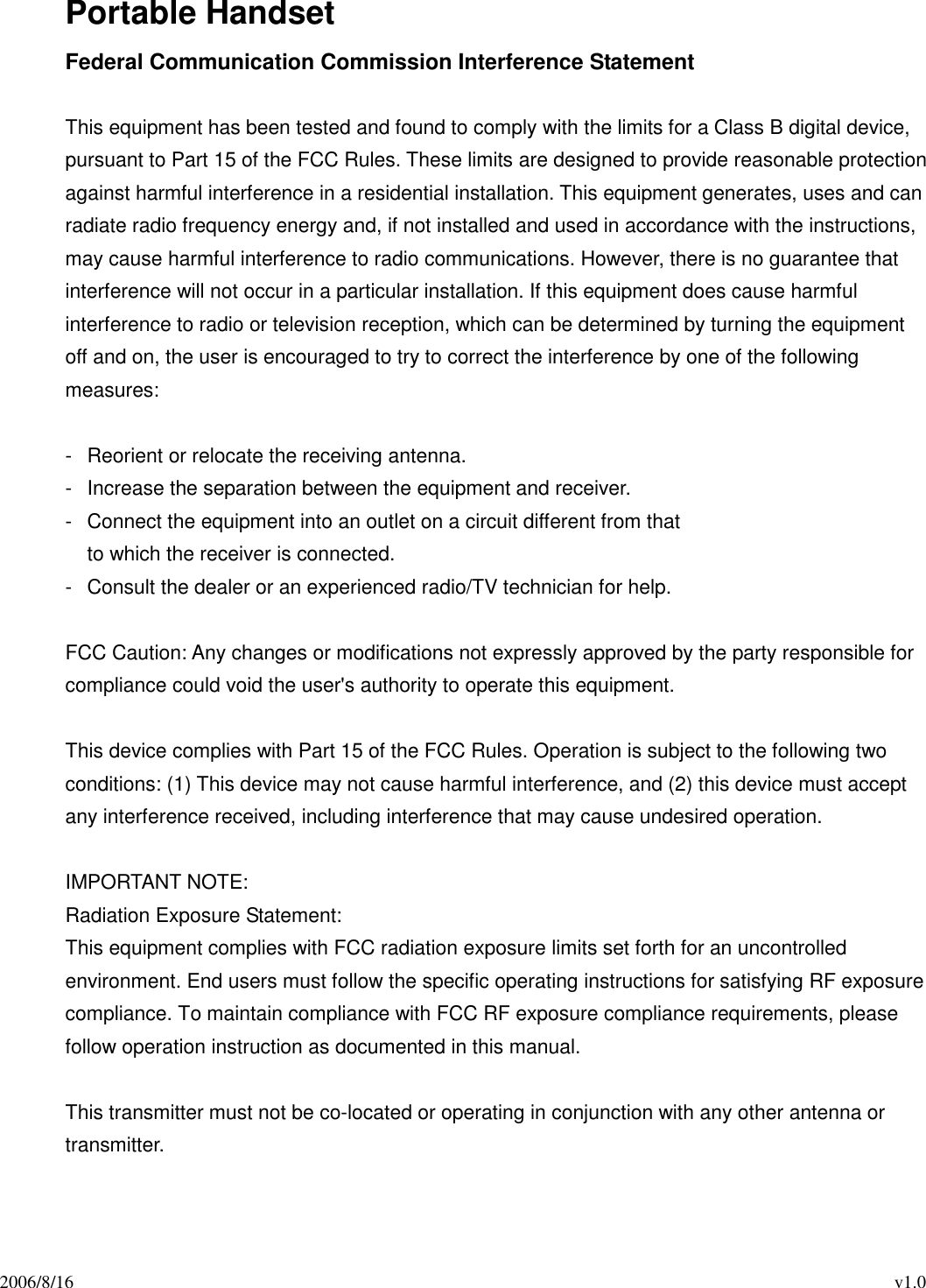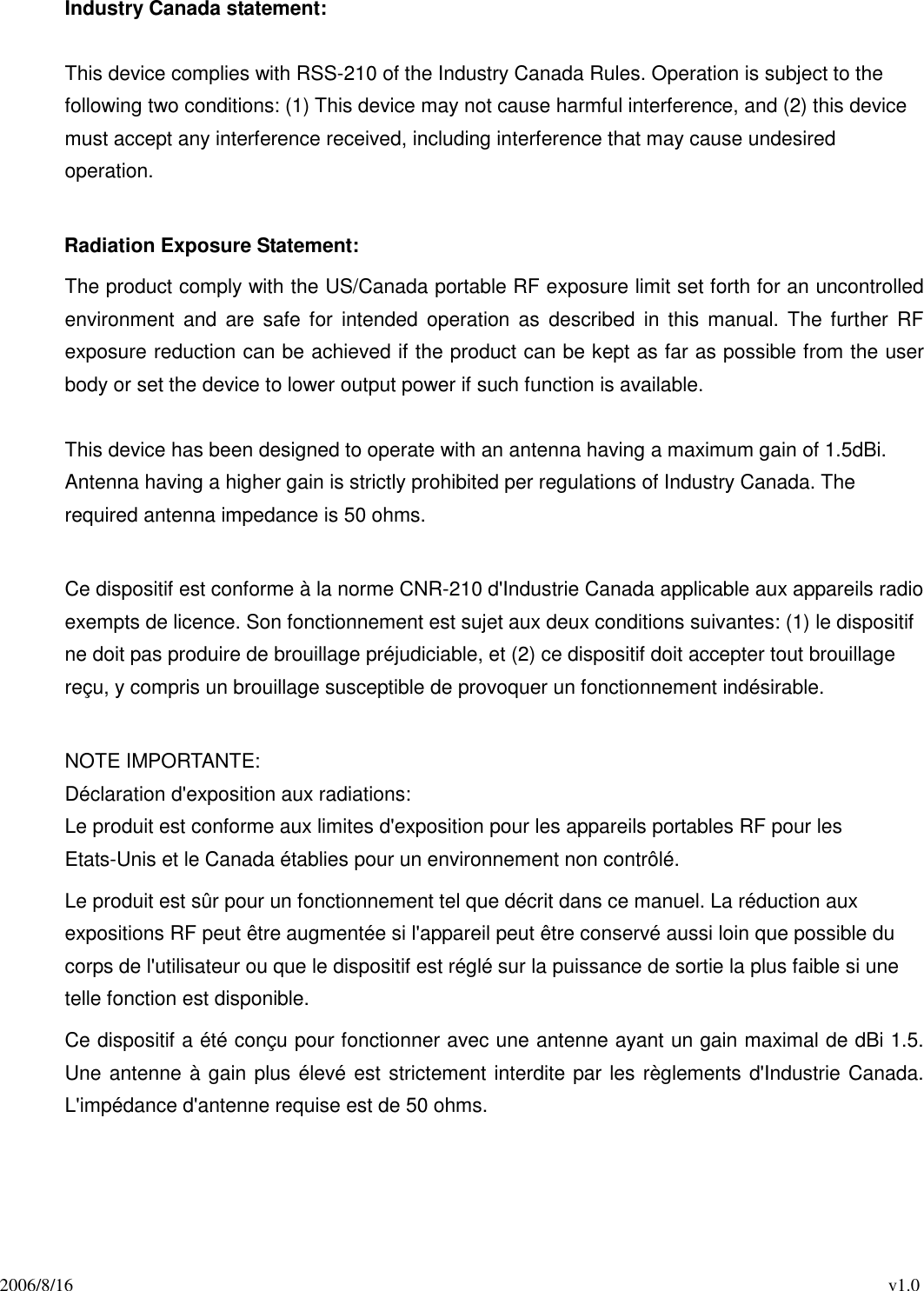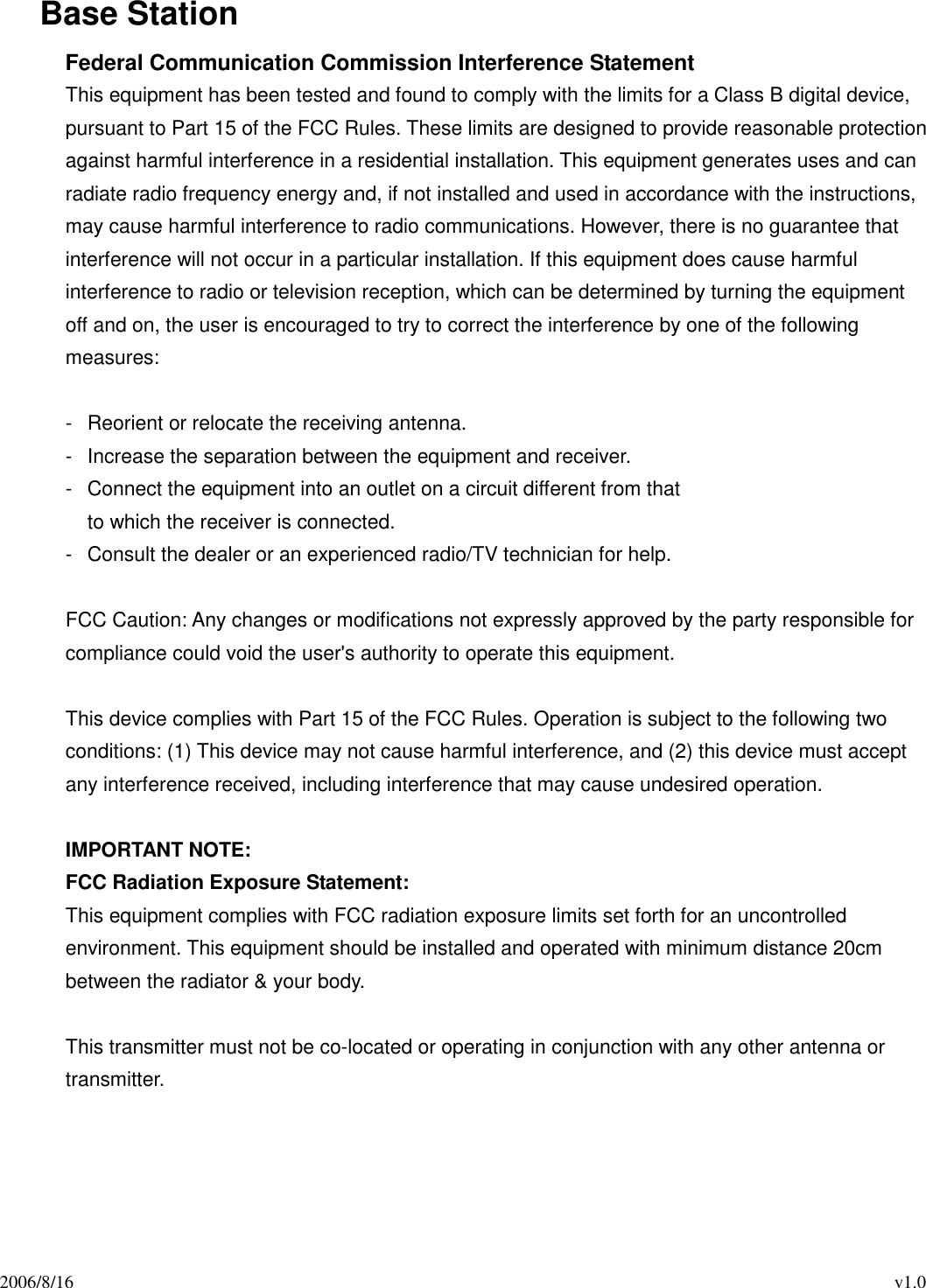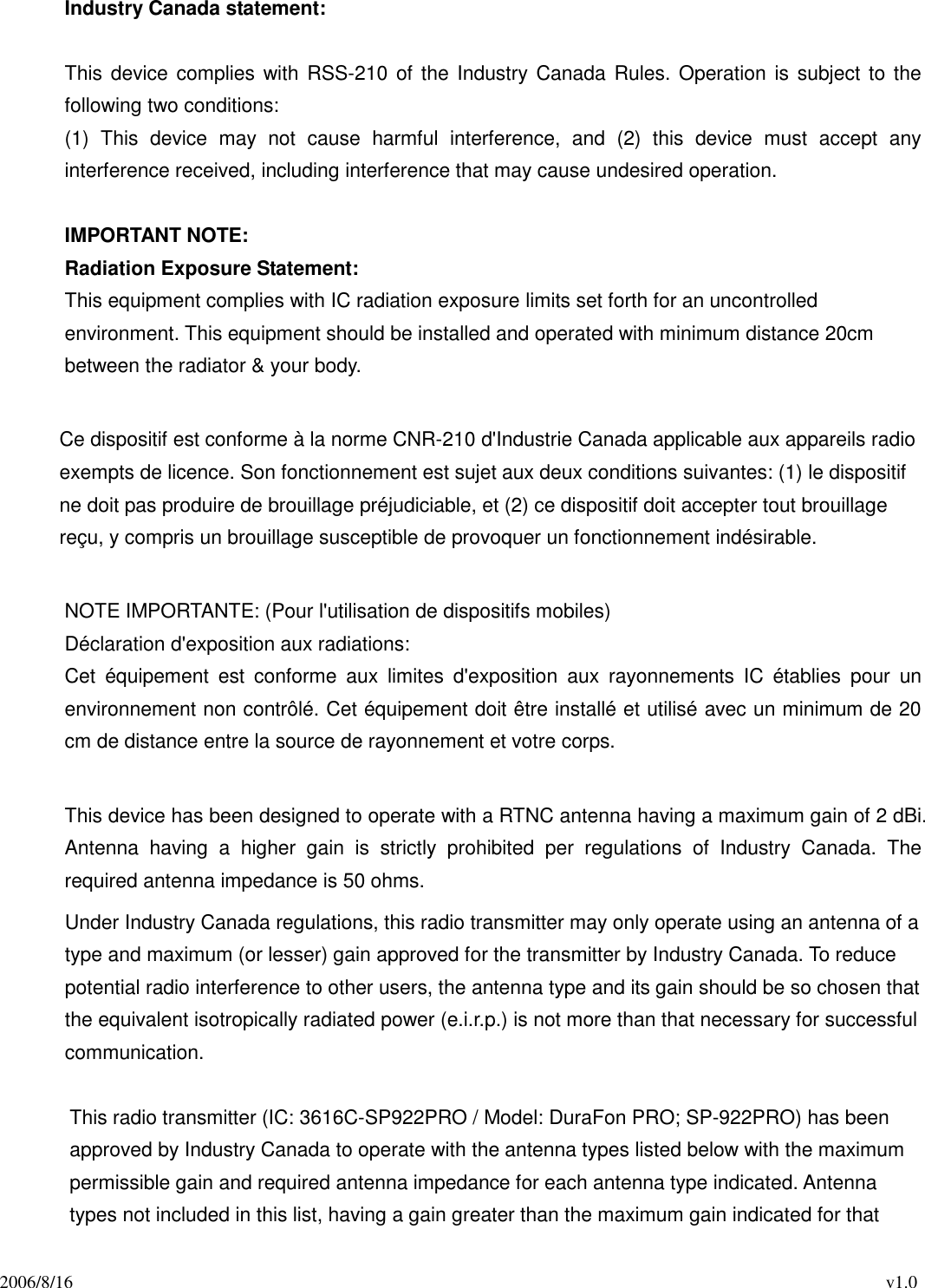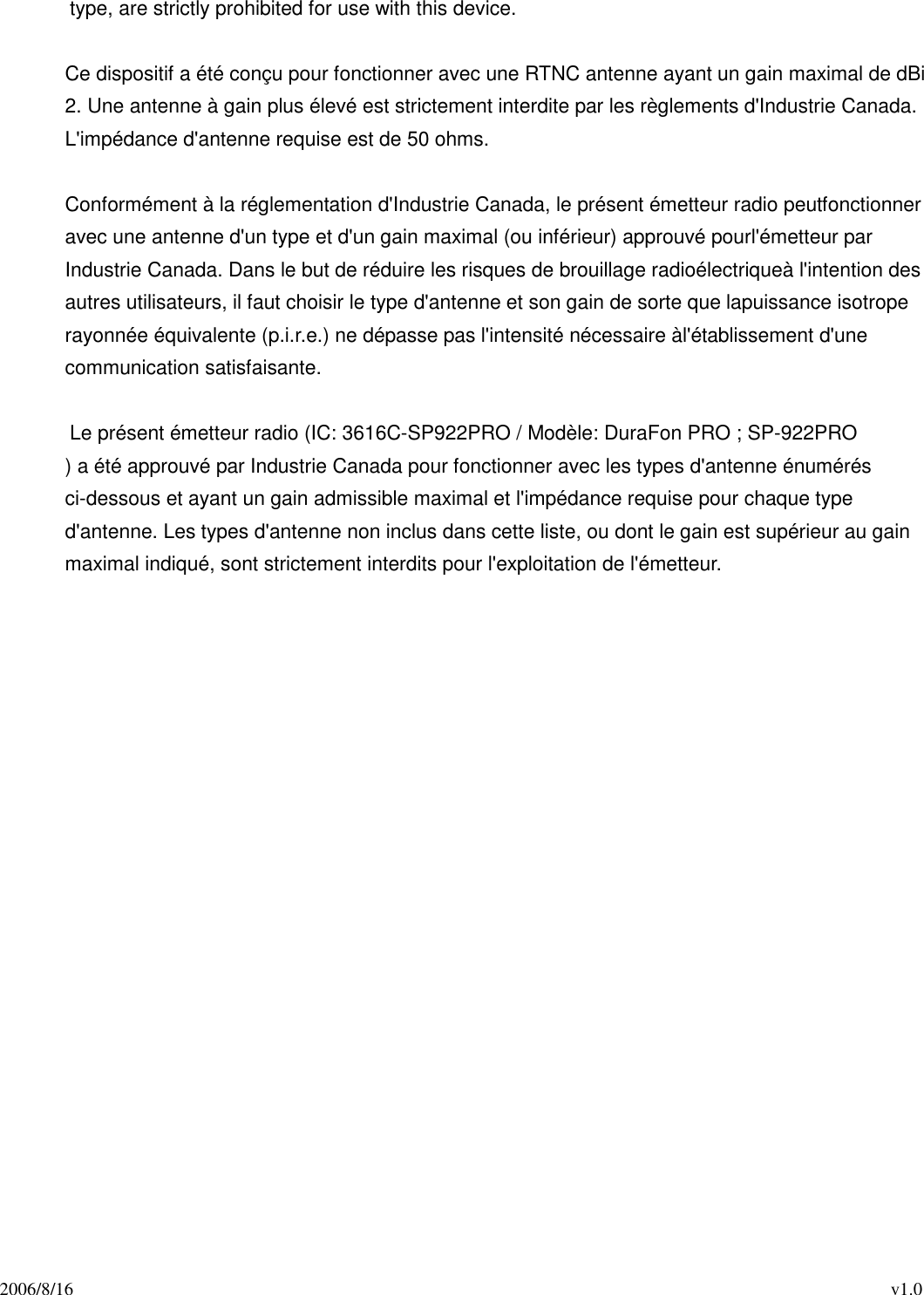Senao Networks SP922PRO 4-Line Cordless Phone System User Manual final statement
Senao Networks, Inc. 4-Line Cordless Phone System final statement
Contents
- 1. User Manual (operation)
- 2. User Manual (stataments)
- 3. User Manual
- 4. User Manual - Statements
User Manual (stataments)
